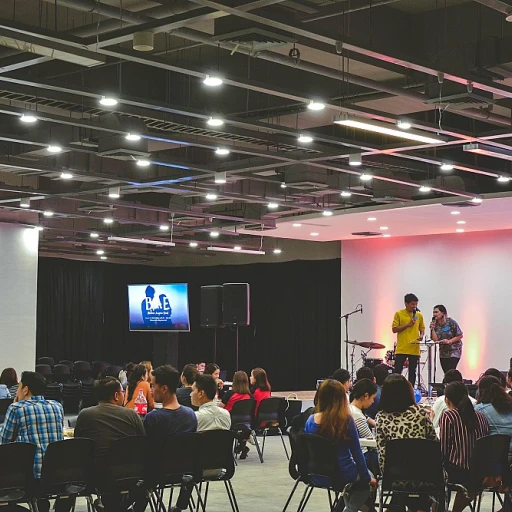
Understanding the Role of Employee Climate Surveys
The Importance of Employee Climate Surveys in an Organization
Employee climate surveys play a crucial role in understanding the workplace climate and enhancing employee satisfaction within an organization. At their core, these surveys are about gathering feedback from employees on various aspects such as work environment, culture, and satisfaction levels. When employees feel heard and valued, it not only boosts their morale but also fosters a healthy organizational climate. This culture of open communication can pave the way for improved employee engagement and a more harmonious work life balance. Conducting climate surveys allows organizations to pinpoint key areas that require attention and improvement. By asking the right questions, companies can gather actionable insights into their workplace culture and identify potential issues before they escalate. Furthermore, the data collected from these surveys can help leadership make informed decisions that align with the overall strategic talent acquisition efforts. Implementing an effective climate survey is not just about asking questions; it's about enabling open communication and creating an environment where feedback is welcomed and acted upon. Visit Building trust with job candidates to explore how fostering trust through feedback mechanisms can lead to a stronger organizational climate. In summary, understanding the role of employee climate surveys is about recognizing their potential to transform the work environment, elevate employee experience, and drive organizational success.Key Elements of a Successful Survey Questionnaire
Critical Components of Crafting Effective Survey Questions
When developing an employee climate survey, it's crucial to focus on crafting survey questions that are clear, concise, and aligned with the objectives of assessing the workplace climate. This lays the groundwork for gathering actionable insights into employee satisfaction and enhancing organizational climate. First, ensure that the questions address the specific areas of the work environment, such as leadership, work-life balance, and organizational culture. Open communication with employees about these topics can provide valuable feedback on how employees feel about their work life and help identify areas for improvement.- Be Specific and Relevant: Frame questions in a way that directly relates to the daily experiences of the workforce. Avoid vague wording that could lead to misunderstandings. For example, instead of asking “Do you like your job?”, opt for more precise questions like “How do you feel about the level of support you receive from the leadership team?”
- Balance Between Quantitative and Qualitative: Use a mix of rating scales and open-ended questions. Rating scales provide a quick way to gauge employee satisfaction quantitatively, while open-ended questions allow employees to express their thoughts in detail.
- Ensure Anonymity: Reassure employees that their responses are confidential. This encourages honesty and results in more reliable data about the workplace climate.
- Pilot the Survey: Before full deployment, test your survey template with a small group to refine the questions and ensure clarity. This step helps identify potential issues that may affect the quality of the feedback.
Designing Questions for Maximum Impact
Crafting Questions That Encourage Meaningful Feedback
Designing effective survey questions is crucial for capturing comprehensive feedback from employees. The objective is to formulate questions that are clear, unbiased, and directly related to the organizational climate and workplace culture. Consider these strategies to achieve maximum impact from your surveys:
- Focus on Clarity: Ensure questions use simple language, avoiding jargon or complex terms that may confuse employees. This approach will help employees provide precise feedback about the work environment and employee experience.
- Utilize a Mix of Question Types: While multiple-choice questions can offer measurable data, open-ended questions encourage open communication and provide deeper insights into how employees feel about the workplace climate.
- Align with Organizational Goals: Questions should reflect the organization’s strategic objectives and seek to gather information that can inform leadership decisions and promote a positive workplace.
- Avoid Leading Questions: Questions should be neutral and not suggest a desired answer. This neutrality can enhance the authenticity of feedback related to satisfaction and employee engagement.
- Incorporate Best Practices: Use existing survey templates as a reference for crafting effective questions that resonate with your employee climate.
Building effective survey questions can transform employee feedback into actionable insights that support the evolution of organizational culture. According to research on key metrics in talent acquisition, well-designed surveys not only enhance employee satisfaction but also bolster the overall talent acquisition strategy.
Analyzing Survey Results to Inform Talent Acquisition
Evaluating Survey Results for Strategic Insights
Proper analysis of employee climate survey feedback is crucial to inform talent acquisition and enhance the overall work environment. By deciphering the data gathered from these surveys, companies can obtain actionable insights that drive improvements in employee satisfaction and retention. When evaluating survey results, consider the following key aspects:- Identify Patterns and Trends: Look for recurring themes in employee responses. Are there consistent concerns about leadership, work-life balance, or organizational culture? Understanding these trends can help pinpoint areas needing immediate attention.
- Segment the Data: Break down survey responses by different departments, roles, or locations. This allows you to see if certain groups within the organization feel differently about their work environment and tailor solutions accordingly.
- Assess Open-Ended Feedback: Open-ended survey questions provide employees with the opportunity to express their thoughts beyond structured questions. Analyze this qualitative data to uncover deeper insights into employee experiences and workplace climate.
- Correlate with Other Metrics: Compare survey data with other performance indicators such as turnover rates, employee engagement scores, or productivity metrics. This correlation helps reveal the impact of workplace climate on overall company performance.
Integrating Feedback into Talent Acquisition Processes
Bridging Feedback and Talent Acquisition
Integrating feedback derived from employee climate surveys into talent acquisition processes can elevate a company's recruitment strategy. Employee feedback serves as a pivotal source of organizational insights, highlighting areas that require enhancement and offering suggestions for improvement. By analyzing survey results, organizations can identify specific areas within the workplace environment that may influence employee satisfaction and engagement levels. Reliable data collected from these surveys can shape future recruitment strategies that align with employees' expressed needs and expectations. For example, if a climate survey reveals concerns about work-life balance, leadership may endeavor to adapt the workplace culture to promote more flexible working arrangements. Incorporating employee feedback into the talent acquisition process requires open communication between leadership and HR teams. By ensuring that survey feedback is translated into actionable insights, companies can make informed decisions to tailor their recruitment approaches to better fit the desired organizational climate. This may involve revisiting or even redesigning job descriptions, recruitment strategies, and onboarding processes to reflect the feedback received. By leveraging insights from survey data, organizations can modify employment branding narratives to more accurately depict the company culture and work environment. Highlighting a positive workplace climate and demonstrating a consistent commitment to addressing employee concerns can attract job candidates who share similar values, increasing the likelihood of acquiring candidates who will thrive and remain satisfied within the organizational framework. Ultimately, integrating survey feedback into talent acquisition ensures that the company's recruiting efforts genuinely reflect the current organizational climate. This integration fosters an environment where new hires can seamlessly contribute to the company’s mission while feeling valued by a culture that prioritizes employee experience and satisfaction.Best Practices for Continuous Improvement
Maintaining a Culture of Continuous Feedback
Creating a culture that values continuous feedback doesn't just begin and end with the employee climate survey. It's a process that needs ongoing attention and commitment from leadership. Providing employees with regular opportunities to voice their satisfaction and grievances can significantly improve the workplace culture and employee experience.- Use of Survey Software: To manage this effectively, consider implementing reliable survey software that makes it easy to distribute climate surveys regularly. This ensures you receive ongoing insights into how employees feel about the work environment.
- Open-Ended Feedback: Encourage open-ended feedback to gather qualitative data that could reveal deeper insights into areas that might need attention. Open communication channels can help employees feel valued and contribute to a more inclusive organizational climate.
- Act on Feedback: One of the main reasons for conducting these surveys is to take actionable insights and implement them. This means taking the time to analyze data collected and making informed decisions to enhance the workplace climate.
- Regular Training Sessions: Ensure your leadership team is equipped to handle feedback in a constructive manner. Offer regular training on how to facilitate a culture where employees feel safe and comfortable to express their thoughts on job satisfaction and work-life balance.
- Tailor Survey Templates: Each company has unique challenges, so it's important to customize survey templates that align with specific organizational goals. Doing this can help better understand of specific areas where improvement is needed, ultimately benefiting the organizational climate and overall employee engagement.











